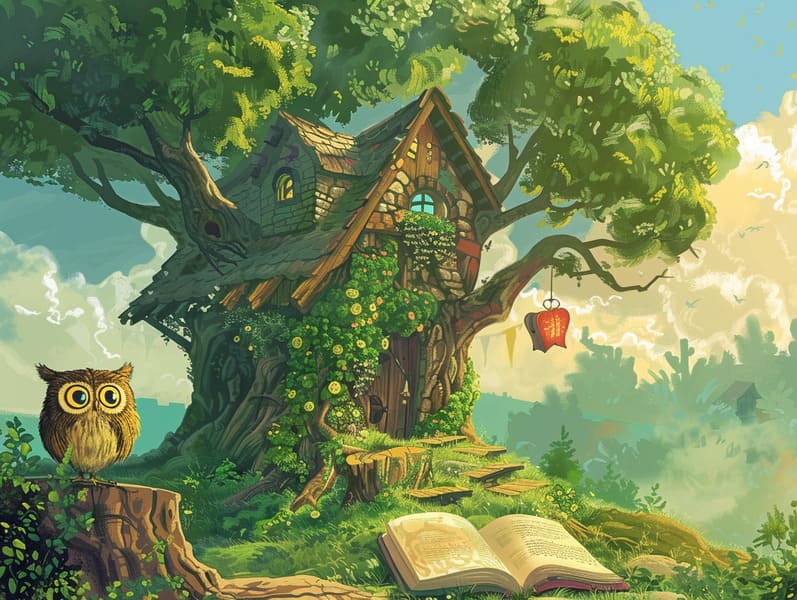
Grimm's fairy tales have long histories. These tales have been spoken from one generation to the next long before they were ever published. They developed from a variety of cultures, including Asian traditions. They were initially disseminated among adults, often carrying themes and messages aligned with the societal norms and beliefs of the time.
The renowned Brothers Grimm, the two Grimm brothers, were among the first to gather and publish many of these beloved narratives. Their published works, "Grimm's Fairy Tales," included classics like "The True Bride," "The Story of Hansel and Gretel," and "Snow White," which have since become staples in the world of children's fairy tales. Similarly, H. C. Andersen's fanciful stories, such as "The Sea Maid," and "The Duckling that Could," have stolen hearts worldwide, establishing their place in the pantheon of classic fairy tales.
Despite their ancient origins, these tales remain as important as ever, especially as children's bedtime stories. These whimsical stories are now available in different formats, including richly illustrated books, enchanting animations, and online storybooks.
Their persistent charm can be credited to several charming aspects:
Vital Lessons: Ancient fairy tales often provide important moral lessons. Stories like "The Shepherd Boy and the Wolf" teach the significance of sincerity, while "The Tortoise and the Hare" exemplify the virtues of steadfastness and modesty. These tales offer children clear distinctions between truth and falsehood, guiding their moral compass in a subtle yet meaningful way.
Warmth and Understanding: Fairy tales frequently involve beings facing challenges and struggles, urging children to connect with their struggles and encourage their triumphs. For instance, "Beauty and Her Beast" shows us the necessity of looking past the exterior to perceive the true being of a being, promoting sympathy and comprehension.
Cultural Understanding: Many timeless fairy tales are imbued with the cultural contexts from which they blossomed. Reading these stories can provide fascinating glimpses into different customs, cultivating a sense of cultural appreciation and acknowledgment.
Imagination and Creativity: The fantasy-filled elements in fairy tales—enchanted objects—enhance children’s creative thoughts. These narratives move readers to mythical realms, fostering fantastical thinking and a sense of marvel that lasts a lifetime.
Classic fairy tales are not only fantastical but also edifying. They serve as fascinating tools in nurturing various intellectual and emotional capacities in little ones. When traditional fairy tales are recited, they nurture language skills by teaching new terms and complex sentence structures. This practice also advances auditory perception and attentiveness, as young readers track the narrative, keen to see what happens next.
Furthermore, debating the themes and characters of traditional fairy tales can improve thinking skills and analytical skills. Young readers are led to detect patterns, guess what will happen, and grasp cause and effect. These contemplations also ease young readers speak out their thoughts and feelings, promoting their emotional intelligence.
In today’s electronic age, the abundance of internet fairy tales has made these narratives more within reach than ever. Web-based platforms and digital apps extend ample collections of classic fairy tales that can be looked at or played anytime, anywhere. Fairy tales narrated are particularly in demand, supplying an interactive method for kids to engage with these captivating stories. Narrated books and read-to-me videos lead characters and settings to life, often complemented by captivating melodies and instrumentals that boost the narrative experience.
The timeless fascination of old fairy tales lies in their ability to change to modern days while staying true to their fundamental ideas. Contemporary versions of these fairy tales often integrate more varied characters and modern settings, making them accessible to today’s audience. However, the key lessons of heroism, generosity, and equity remain more info unchanged, continuing to touch readers of all ages.
Old fairy tales also offer a sense of solace and closeness. They share a orderly narrative with a recognizable beginning, middle, and end, often ending with the termination of conflicts and the triumph of morality over immorality. This constancy can be solacing for kids, bringing a sense of sturdiness in an constantly changing world.
Traditional fairy tales continue to spellbind and coach new generations, maintaining their appeal and pertinence in modern society. As kids' bedtime tales, they distribute a perfect blend of delight and instruction, facilitating moral values, empathy, and creativity. The abundance of online fairy tales and the widespread nature of fairy tales read aloud certify that these classic fairy tales remain accessible to new generations.
By continuing and passing on these stories, we continue to praise the rich tapestry of cultural heritage and cultural heritage. Whether you are reading a gorgeously illustrated book, browsing a virtual library, or listening through an audiobook, the charm of famous fairy tales is always within reach. These fairy tales point out of the consistent power of narratives and its ability to join us across time and space.
Be it you are browsing a artistically illustrated book, enjoying a digital library, or listening through an narrated book, the grandeur of bedtime fairy tales is always within reach.
These fairy tales remind us of the unchanging influence of narratives and its ability to gather us across centuries and lands, forging a link that fascinates and enlightens alike.